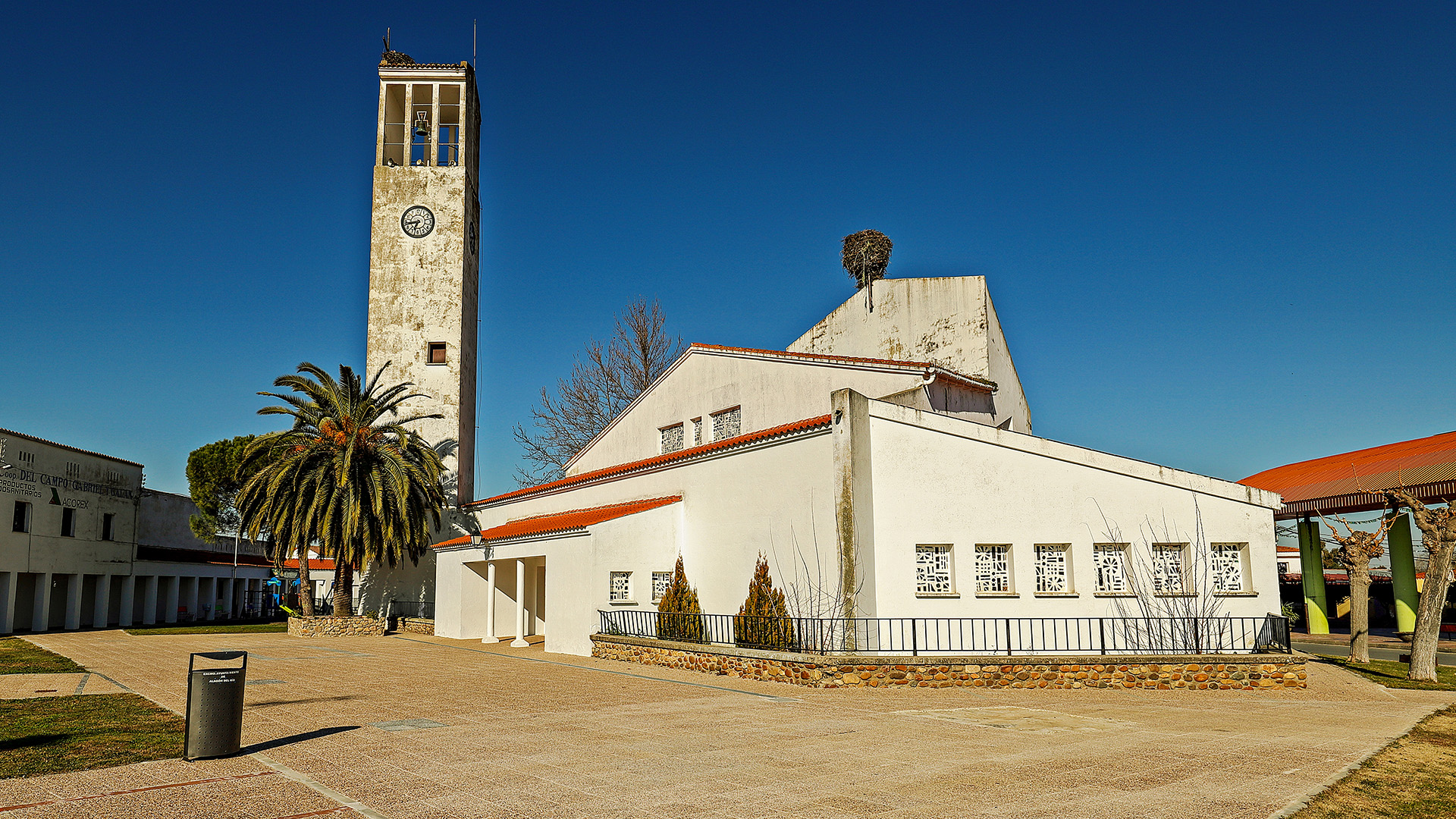The lessons of Franco’s utopian villages
Following the Spanish civil war, Franco spearheaded sweeping rural modernisation and reconstruction. During this period, Franco had 300 ‘utopian villages’ built from scratch. PhD researcher Jean-François Lejeune places these villages in the wider context of a distinct South European modernism, and argues for a reassessment of this controversial heritage.
Modernism as conceived in Germany was focused on simplicity and clean lines: flat roofs and wide façades, devoid of ornamentation. But whereas modernisation in Northern Europe was driven by industrialisation and a new form language, the architects in Southern Europe rather looked towards existing, traditional folk architecture. In the 1930s, during the rise of fascism in Europe, many Southern European architects did not believe that the architecture advocated by the Bauhaus was fitting. “They were already very familiar with those flat roofs, the simple walls and the wide façades from their own rural villages. They began to realise that for modern construction ideas, you need not only focus on the Germans. That led to an interesting debate at the time: how can you be modern, while also being Spanish or Italian?”, explains Lejeune.
Utopian villages
Lejeune previously researched vernacular architecture in Italy and his home city of Miami Beach, but his doctoral research entitled Built Utopias in the Countryside: The Rural and the Modern in Franco's Spain focuses specifically on Spain, where the emergence of modernism coincided with Franco’s regime. This neglected period of Spanish architectural history gave rise to numerous successful architects and buildings.
Following the Spanish civil war, Franco spearheaded sweeping rural modernisation and reconstruction. With the Falangist planners at the helm, a strategy of ‘domestic colonisation’ was developed in Spain (which had recently lost its colonies). This was inspired by Zionist colonisation in Palestine and comparable developments in Italy.
In addition to the construction of major waterworks to irrigate the land, this policy – Franco’s so-called ‘hydrosocial dream’ – also included the construction of 300 modern rural villages, the pueblos (1940-1971). These villages were built from scratch and designed as ‘rural utopias’. But in contrast to the Zionist version – the kibbutz – the pueblos were built in accordance with age-old Spanish traditions – a central square, a church and the town hall, surrounded by houses and shops.
Lejeune argues that this version of modernisation was much more in keeping with the Spanish identity. “Spaniards enjoyed meeting up on the squares. Despite the modern architecture, the central square and church were the starting point for the planners.” These ideas were also an excellent match for Franco’s nationalistic-Catholic body of thought: the self-sufficient community, dominated by the church.
Lejeune researched the two institutes founded under Franco to implement the reconstruction and colonisation programmes, and delved into the archives of architects working at the time. Over a period of seven years, he visited the villages, sometimes in person, using back roads, and sometimes using Google Earth. All of these villages still exist today, and he found the majority in great condition and well maintained.
Particularly the public spaces have stood the test of time well. The plazas may have evolved in terms of style and design – thanks to the introduction of cars into daily life in the 1960s, for example – but their functional arrangement remained unchanged. Lejeune thinks this could be a good lesson for today’s urban developers.
Most of the architects who designed and built the villages were employed by the government – and a dictatorial regime at that – but they still managed to design public spaces that were both pleasant and functional. “Why is it that with all the latest resources at our disposal, we are no longer able to design public spaces that are as attractive and user-friendly as what was built under Franco between 1940 and 1960?”, wonders Lejeune. In this regard, he also points to the Spanish Costas, which are colonised by tourists and holiday home owners. Here entire communities were created without any sense of community or cultural identity.
Preservation
Lejeune says that nowadays, there is enormous variation in how people feel about the pueblos – which are in a way, tainted heritage. Some villages have installed a plaque to commemorate their history, while other villages exercise more restraint when it comes to promoting the history of Franco. The villages are also still not very well-known within Spain, and are subject to uncoordinated rebuilding. “By modern-day standards, the original houses are too small for a family. All kinds of extensions, upwards and outwards, have caused frequent damage to the properties.”
However, Lejeune does believe that it is possible to extend the houses without compromising their integrity. Still, developing policy to preserve the houses – which are often privately owned – is a complicated and sensitive issue; people are reticent to fly the flag for Franco’s legacy. In his research, Lejeune nevertheless concludes that there is a move towards preservation. But this will certainly not be easy to realise, and will take many years.
